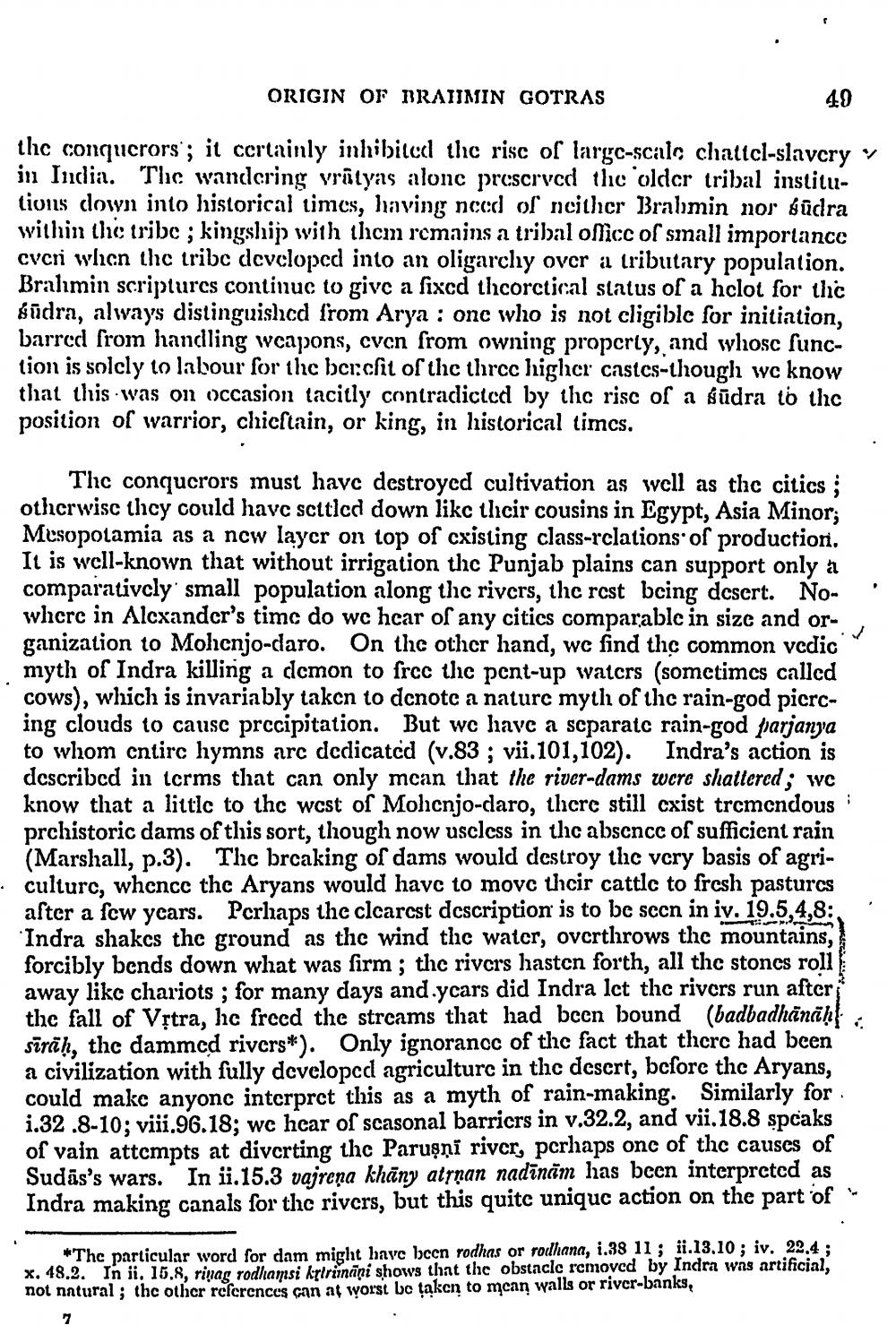________________
ORIGIN OF BRAIIMIN GOTRAS
49
the conqucrors; it ccrtainly inhibited thc risc of largc-scalo chattcl-slavcry v in India. The wandering vrâtyas alonc prcscrved the older tribal institutions down into historical limes, having need of neither Brahmin nor dūdra within the tribc; kingship with thcm remains a tribal olicc of small importance cvcri whicn the tribc developed into an oligarchy over a tributary population. Bralımin scriptures continue to give a fixed thcorctical status of a hclot for thic sūdra, always distinguishıcd from Arya : one who is not cligiblc for initiation, barred from handling wcapons, cvcn from owning properly, and whosc function is solcly to labour for the bercfit of the thrcc higher castcs-though we know that this was on occasion tacitly contradicted by the risc of a sūdra to the position of warrior, chicstain, or king, in historical times
Thc conqucrors must have destroyed cultivation as well as thc citics; otherwisc thcy could havc scttled down likc thcir cousins in Egypt, Asia Minor; Mesopotamia as a new layer on top of cxisting class-relations of productiori. It is well-known that without irrigation thc Punjab plains can support only a comparatively small population along the rivers, thc rcst being desert. Nowhcrc in Alcxander's timc do wc hear of any citics comparablc in sizc and organization to Mohenjo-daro. On the other hand, we find the common vcdic myth of Indra killing a dcmon to free the pent-up watcrs (sometimes called cows), which is invariably taken to dcnotc a naturc myth of the rain-god picrcing clouds to cause precipitation. But we have a scparatc rain-god parjanya to whom cntirc hymns arc dedicated (v.83 ; vii.101,102). Indra's action is described in terms that can only mcan that the river-dams were shattered; wc know that a littic to the west of Mohenjo-daro, thcrc still exist tremendous : prchistoric dams of this sort, though now uscless in the absence of sufficient rain (Marshall, p.3). Thc brcaking of dams would destroy thc very basis of agriculturc, whcncc thc Aryans would have to move their cattlc to fresh pastures after a few years. Perhaps the clcarcst dcscription is to be seen in iv. 19.5,4,8:. Indra shakes the ground as the wind thc watcr, overthrows the mountains, forcibly bends down what was firm ; the rivers hastcn forth, all the stones roll away likc chariots ; for many days and.ycars did Indra lct the rivers run after the fall of Vộtra, hc freed the strcams that had been bound (badbadhanah sītäh, thc dammcd rivers*). Only ignorancc of the fact that therc had been a civilization with fully developed agriculture in the desert, before thc Aryans, could make anyonc intcrprct this as a myth of rain-making. Similarly for i.32.8-10; viii.96.18; wc hcar of scasonal barricrs in v.32.2, and vii.18.8 spcaks of vain attempts at divcrting thc Paruşņi river, perhaps one of the causes of Sudās's wars. In ii.15.3 vajrena khāny atšņan nadīnām has been interpreted as Indra making canals for the rivers, but this quite uniquc action on the part of
*The particular word for dam might have been rodhas or rodhana, i.38 11 ; ii. 13.10; iv. 22.4 ; x. 48.2. In ii, 15.8, rinas rodhamsi krirināni shows that the obstaclc removed by Indra was artificial, not natural; the other references can at worst be taken to mcan walls or river-banks,




